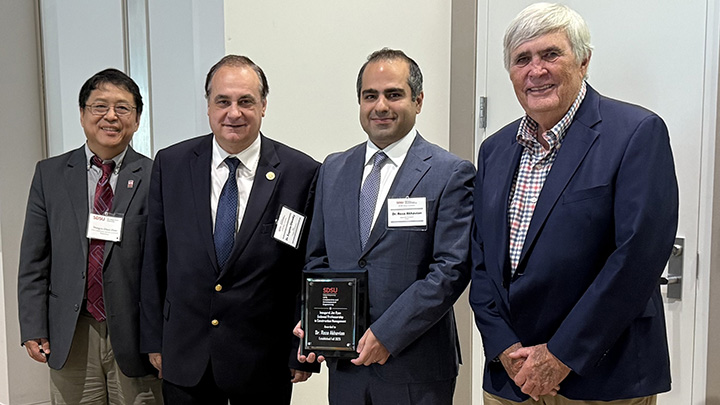How Should Your Garden Grow?
A new grant from USDA will promote indigenous knowledge, sustainability and agricultural careers to students.

For centuries, indigenous Mixtec farmers in Oaxaca, Mexico, have used a crop-growing system known as milpa to grow the traditional “three sisters” of Native American agriculture: corn, beans and squash.
This summer, students from San Diego State University will live and work alongside Mixtec farmers, learning milpa methods and traditional agricultural technology. Two significant differences in the methods are in what crops are planted to grow together, and how crops are rotated over time.
SDSU students will bring those lessons back to campus to compare and contrast the milpa system with modern industrial agricultural practices, offering a unique opportunity to validate indigenous knowledge and promote agricultural careers.
“It’s going to be two weeks of really intense immersion, showing them how farmers think, act and live,” said Ramona Pérez, professor of anthropology and director of SDSU’s Center for Latin American Studies, who will be leading the group to Oaxaca in June.
The project is funded by a recently awarded $250,000 grant from the U.S. Department of Agriculture to expose Latino and Latina students to the agricultural sciences. Pérez, along with the grant’s principal investigator and food scientist Changqi Liu; biochemist John Love; and environmental scientist David Larom, created the Sustainable, Optimized Urban and Latino-driven Agriculture (SOULA) project, which is directing the Oaxaca trip and several other agriculture-focused activities.
It’s a perfect fit for SDSU, which is designated as a Hispanic-serving institution, Pérez said, and is one of the only universities in the world that teaches indigenous languages like Mixtec, Zapotec and Nahuatl.
For the Oaxaca trip, paid for by the USDA grant, eight students will travel to Ixpantepec Nieves, a small village in the mountains some seven hours outside Oaxaca City. They will live with host families and learn traditional farming practices—such as why they plant specific crops under different climate and soil conditions—as well as traditional recipes, cooking techniques and nutritional philosophy. Students will also learn about farmers’ experiences with agricultural chemicals and pesticides and how such materials have impacted soil, productivity and health, for better or worse.
After returning to San Diego, as many as 60 students will plant corn, beans and squash in the College Area Community Garden (CACG) adjoining SDSU’s main campus. Students will cultivate some plots using milpa methods, and others using modern farming practices, giving them a chance to learn about the advantages and disadvantages of each method for cultivating in the San Diego region.
“It’s an opportunity to promote cross-cultural knowledge and encourage agriculture science as a career choice for Latino and Latina students,” Pérez said, “and it promotes sustainable farming in San Diego communities.”
A second prong of the grant will fund the construction of a chicken coop at the CACG. Led by Liu, students will raise chickens on either regular grain-based chicken feed or a composite feed fortified with protein-rich cricket meal. Compared to grain crops, “crickets are nutrient-dense and have a low environmental footprint,” Liu said.
The students will analyze the nutritional quality of the eggs laid by the chickens to see whether the cricket-fed chickens produce healthier, more nutritious eggs.
The impact of the study could go beyond healthier omelets, though, added Trevor Toia, a sustainability major and director of SDSU’s Campus Grown program, which grows produce used on campus by SDSU Dining. The cricket feed program will also examine whether the insects could make a viable, sustainable and maybe even tasty addition to the human diet.
“It seems like an idea that could reduce our own environmental footprint with regards to our food consumption,” Toia said. “And I also think it could really take off culinarily. I can imagine chefs at top restaurants developing cricket-based dishes that people would actually enjoy.”



